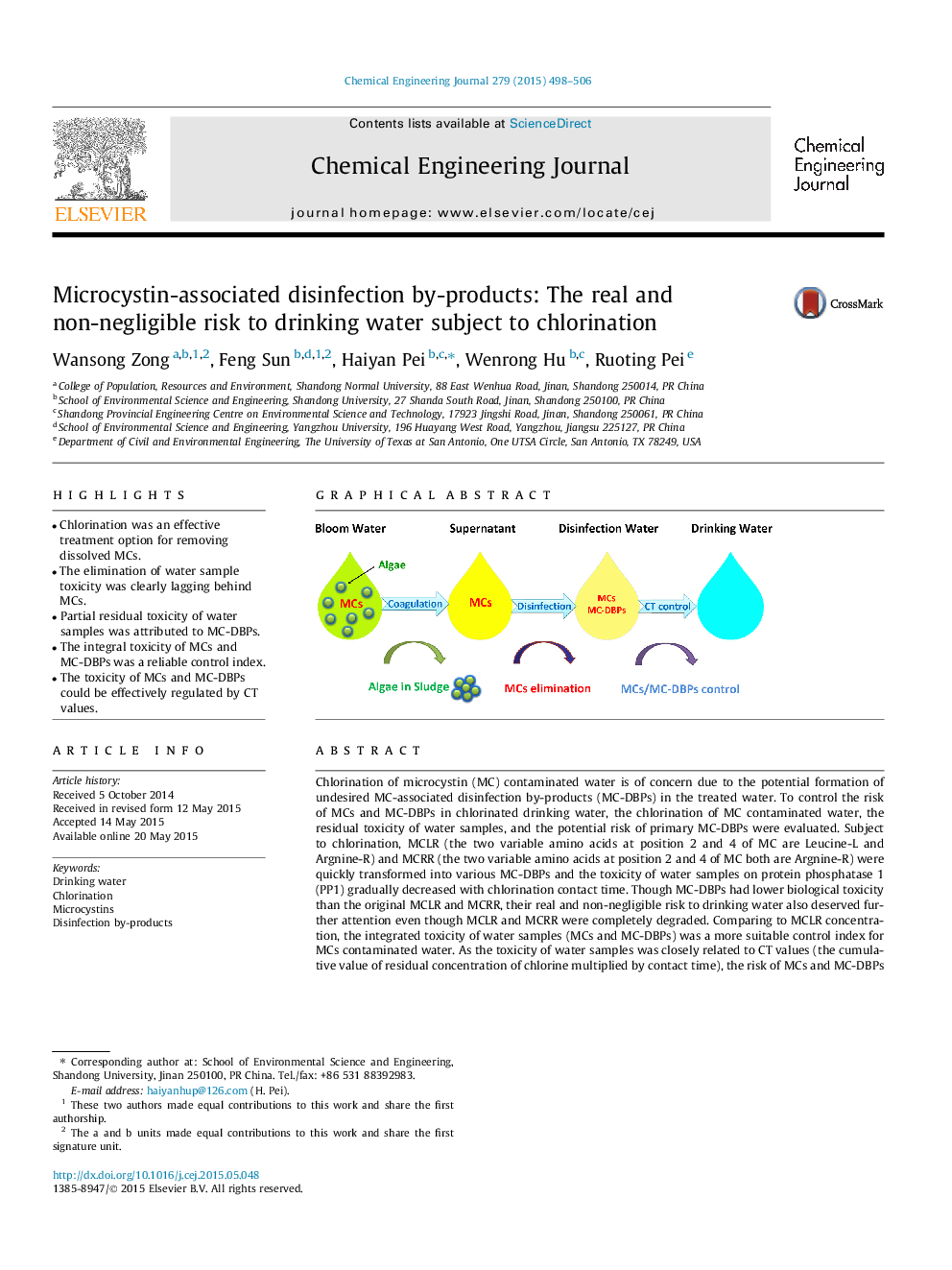| کد مقاله | کد نشریه | سال انتشار | مقاله انگلیسی | نسخه تمام متن |
|---|---|---|---|---|
| 146093 | 456362 | 2015 | 9 صفحه PDF | دانلود رایگان |
• Chlorination was an effective treatment option for removing dissolved MCs.
• The elimination of water sample toxicity was clearly lagging behind MCs.
• Partial residual toxicity of water samples was attributed to MC-DBPs.
• The integral toxicity of MCs and MC-DBPs was a reliable control index.
• The toxicity of MCs and MC-DBPs could be effectively regulated by CT values.
Chlorination of microcystin (MC) contaminated water is of concern due to the potential formation of undesired MC-associated disinfection by-products (MC-DBPs) in the treated water. To control the risk of MCs and MC-DBPs in chlorinated drinking water, the chlorination of MC contaminated water, the residual toxicity of water samples, and the potential risk of primary MC-DBPs were evaluated. Subject to chlorination, MCLR (the two variable amino acids at position 2 and 4 of MC are Leucine-L and Argnine-R) and MCRR (the two variable amino acids at position 2 and 4 of MC both are Argnine-R) were quickly transformed into various MC-DBPs and the toxicity of water samples on protein phosphatase 1 (PP1) gradually decreased with chlorination contact time. Though MC-DBPs had lower biological toxicity than the original MCLR and MCRR, their real and non-negligible risk to drinking water also deserved further attention even though MCLR and MCRR were completely degraded. Comparing to MCLR concentration, the integrated toxicity of water samples (MCs and MC-DBPs) was a more suitable control index for MCs contaminated water. As the toxicity of water samples was closely related to CT values (the cumulative value of residual concentration of chlorine multiplied by contact time), the risk of MCs and MC-DBPs could be effectively controlled by providing adequate contact time when chlorine concentration was restricted. This study offers a comprehensive evaluation of the hazard of MCs and MC-DBPs, and provides a valid technique support for the control of their potential risk to drinking water.
Figure optionsDownload as PowerPoint slide
Journal: Chemical Engineering Journal - Volume 279, 1 November 2015, Pages 498–506
